Crișana
This article needs additional citations for verification. (December 2009) |

Crișana (

| History of Romania |
|---|
 |
|
|
History
Ancient history
In
Middle Ages

In the
Hungarian maps based on the
Jews living in the area transmitted a letter written about 960 CE to King Joseph of the Khazars by Hasdai ibn Shaprut. About the same time Ibrahim ibn Jacob says that Jews went from the same area to Prague for business purposes. Nothing else is known concerning these Jews during the period of the grand princes, except that they lived in the area and engaged in commerce there.[citation needed]
The largest city in the region,
Modern History
After the
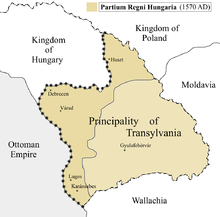
The Ottoman Varat Eyalet that was formed in the second half of the 17th century was centered on Crișana. Since the end of the 17th century, the whole region became part of the lands of the Habsburg monarchy and was administratively divided between the Habsburg Kingdom of Hungary, the Habsburg Principality of Transylvania and the Habsburg Military Frontier.
Following the abolition of the
(western part).Geography
Romanian Crișana is located within the
Hungarian Körösvidék is covered by the areas of
Cities
The most important cities are:
Gallery
-
Arad - Orthodox Cathedral
-
Arad - Ioan Slavici - Classic Theatre
-
Arad - Administration Palace
-
Oradea - The Ferdinand Square
-
Oradea - The Faculty of Medicine
-
Oradea - The Black Eagle Palace
-
Crişul Repederiver
-
Salonta - Orthodox Church
-
Salonta - Arany Janos High School
-
Salonta - The central park
-
Wooden church in Brădet
-
Bekescsabatheater
-
Gyula castle
See also
References
- ISBN 9781861891037.
- ISBN 9780847698097.
- ^ Simonis De Keza Gesta Hungarorum, edited and translated by Laszlo Veszpremy and Frank Schaer with a study by Jeno Szucs. CEU Press, 1999. p. 75
- ISBN 9789004438637.
- ^ Anonymous Notary of King Bela: The Deeds of the Hungarians, edited translated and anotated by Martyn Rady and László Veszprémy. CEU Press, 2010. p. 33.
External links



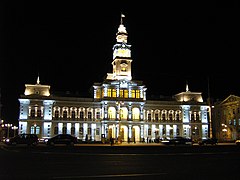
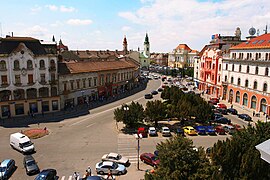


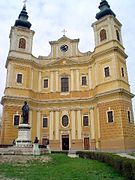


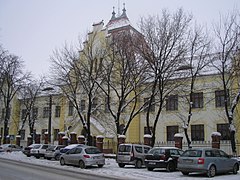
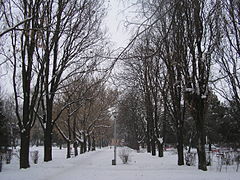
![Wooden church in Brădet [ro]](http://upload.wikimedia.org/wikipedia/commons/thumb/c/c1/Bradet.peste_sat.jpg/322px-Bradet.peste_sat.jpg)


